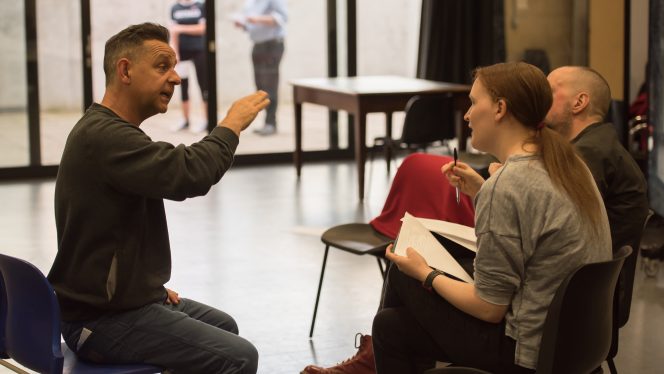Belgrade Youth explore how lockdown has changed how we live and how we perform
Last week, Senior Youth Theatre member Cameron wrote about how his group had been exploring the theme of loneliness in their Zoom-based Telling Stories on (the Small) Screen project. This week, he considers how the pandemic has changed people’s day-to-day behaviour, and how lockdown requires us to think creatively about different ways of working.
In last week’s session, we began building on characters we had started to develop in the previous session, and were given the task of imagining how they would act together in a subway during the Covid-19 pandemic.
It was a really interesting challenge and one that we were able to approach with both humour and seriousness, looking at how eccentric lockdown has made people. I noticed themes of obsessive hygiene and unrealistic fears emerging. Personally, I think even when all this is over, people will still be fearful, and their mental health and sleep will continue to be affected, so I don’t think life will return to what was considered “normal” for a long time after the end of lockdown.
One of the things I have learned during this time is that, although it is important to be wary and take the threat of Covid-19 seriously, we should try to avoid letting it drive our lives. It’s important to try hard to continue to motivate yourself, keep your brain active and keep to a good sleep schedule. Even if you feel like you have no reason to, your body and your mind always need rest.
As well as looking at changing behaviour, we’ve also been thinking about how lockdown has changed the ways we’re able to work together, and how we have to think about presenting and performing our work differently.
In a typical show, the audience sit in their seats and see the actors interacting with each other. Since our performance will be virtual, however, this creates many barriers. Not only are we all in separate boxes doing different things, making us disconnected from a viewer’s perspective, we’re also in different places, so it’s not easy to follow sound or action cues like we would in a normal show.
However, as a group we are working on ways to overcome this and I am starting to see ways that the project might go. Last week I wrote about wanting to experiment with ways of working outside of our individual Zoom boxes, but on reflection I think we were still trying too hard to follow the model of a mainstream theatre performance.
I realise now that since nothing about the current situation is normal, our project probably shouldn’t be either. Since it’s impossible to make it look like we are physically in one space together, why don’t we try to do the opposite? For example, we could make it look like we are a group of new and old friends getting back in touch during lockdown, making a feature of the Zoom interface as part of the story.
At the moment, it seems to me that the project might end up something like a call-in talk show on television, offering a unique perspective and allowing the viewer to feel included. I feel our project will use technology to virtually connect us to each other and the outside world.
We have also now started work on creating monologues for our characters. Eventually, we’ll be able to use these to create a script, adding audio and action cues to improve our delivery and make for a more streamlined project.
In the next session, I’m hoping that we can continue to work on the monologues and think about how they might fit together. Now that everyone is working in sync, it seems to me that the project is taking a wonderful turn!
